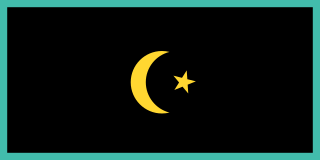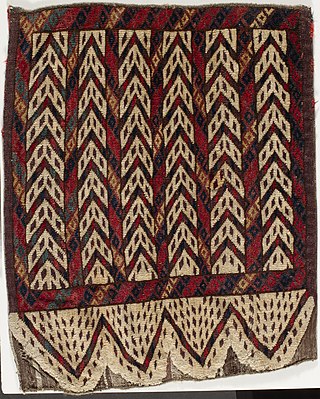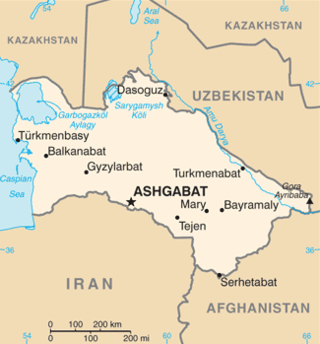Khvia Khanate
It is said that at the end of the reign of Shahgazi Khan (c. 1181 x. - 1767) the Yomuts and Choudors captured Khiva. As a result of attempts at resistance, the khan was overthrown from the throne.
In the same year, some of the dignitaries, hostile towards Muhammad Emin-inak, began to fight against him. For this reason, the inak went to the yomuts, (but) after 18 days Abd-us-Sattar-bai was brought from there. At this time, the dominance of the Yomuts already crossed all borders, and their cruelty and oppression burdened the population to the extreme (fukara).
As a result, Muhammad Emin-inak, Abd-us-Sattar-bai and Abd-ur-Ra-khim-mekhter opposed the Yomuts, but were defeated in the battle of Arab-khane. Pursuing them, the Yomuts stopped at Kara-Tepe and began to prepare for a siege. Some (from the Khivans) began to talk about peace; when the dignitaries (umara) came out and met with the chiefs of the yomuts, they were seized, and at the same time, the yomuts, taking advantage of the fact that the city dwellers were persecuting the teke and the salyrs, seized the city of Khiva .
The Yomuts, with the help of the Aral people, conquered Kungrad, (after which) the power was in their hands.
They put Khan Geldy-inak at the head of the power, who was an adherent and well-wisher of this (Turkmen) tribe, and they did not reckon with other dignitaries, starting with Muhammad Emin, and even treated them with contempt. Themselves at this time began to rob the people, stealing their property and women and insulting him in every possible way.
In 1770, Muhammad Amin-biy, the leader of the Uzbek tribe of Kungrats, defeated the Yomuts and established his power in the khanate.
In 1779, by order of Mohammed Emin-inak, an army of Yomuts, who belonged to the Khorasan and Gurgan Turkmens, came to the outskirts of Khiva. Let it be known that these Yomuts belonged to two different clans (taif): some were called bairam-shahli, and others - choni-sheref, also known under the nickname kara-choka. Mohammed Emin-inak accepted them for service. After that, both of these troops went to war with his enemies.
During the reign of the son and successor of the inak Evez-biy (died March 13, 1804), the Yomuts, apparently, were not in openly hostile relations with him, judging by the fact that he fled to their territory in 1206. (1791 | 92) Pahlavan Quli Bai was extradited by them to the Inak, due to the fact that they "were afraid of his anger and severity."
After the death of Evez-biy in 1219 h. (1804/05) power in Khiva passed to his son Eltuzer, who soon declared himself Khan. From all over the country, the tribes of Turkmens, Kara-Kalpaks and Uzbeks came in whole detachments to congratulate him, but the Yomuts, who, having lived in Urgench for 60 years, did not obey the Khiva khans, laughed at Eltuzer Khan and showed disobedience.
Eltuzer Khan, after ascending to the khan's throne, gave out support to the troops and went to pogrom the Yomuts who lived on the edge of the desert towards Astrabad - the territory of Iran and Gürgen, located south of the city of Khiva. Some of them lived sedentary, while most were nomads. There were approximately 12 thousand families (at the beginning of the 19th century). Each family has two riders, they have thoroughbred horses and are good at pike and saber. So, this tribe was divided into two parts. Some decided to obey, saying: "We cannot leave the homeland of our ancestors and how can we live in a foreign country!" Some of them refused to obey because Eltuzer Khan suggested to them: "If you give up your raids, disobedience and robberies and live like other subjects, paying taxes from sheep, camels and agriculture, then it's good, otherwise, leave our state. " After some time Eltuzer Khan sent a messenger to the yomuts in Astrabad with oaths and assurances to say: "Together with your families and kin, return to the homeland of your ancestors, we will show you affection and love, you will participate in the use of our wealth." Yomuts joyful and cheerful began to return. Eltuzer Khan again handed them their former possessions, so that they could start farming.
After Eltuzer Khan in 1221, H. (1806) power passed into the hands of Mohammed Rahim Khan (1806-1825), to whom the Yomuts also obeyed. [4]
The Yomuts raided the Astrabad and Mazandaran provinces of Persia and Khorasan to kidnap local residents, whom they then sold into slavery, mainly to the Khiva Khanate. [5]
Russian conquest and rule
During the middle of the 19th century, the Yomut had relatively amicable relations with the Russian Empire, though issues persisted. Russia used this relationship to build the port Krasnovodsk in Türkmenbaşy Gulf during the early 1870s, as part of a larger campaign to counter the United Kingdom in the Great Game. However, Russian troops would exploit the Yomut to further their military goals. Atabai Yomut were raided for their camels and livestock by Russian troops during a failed attack on Khiva, breaking a treaty. Several months later, Russians attempted to barter for Atabai Yomut camels for the Khivan campaign of 1873. When rejected, they once again raided the area.
From 1880 to 1884 the Russian Empire began a land invasion of Turkmenistan, rapidly acquiring major towns and cities. Some Yomut tribes accepted Russian rule, such as those living in the Merv Oasis. However, Russian General Mikhail Skobelev used threats to gain the loyalty of several Yomut tribes, and carried out punitive military actions against dissenters. These actions, combined with significant Yomut casualties in the Battle of Geok Tepe, damaged Russian-Yomut relations.
In the 1910s, the city of Khorezm was significantly weakened by ethnic tension between Turkmens and Uzbeks. The ruling dynasty and much of the urban population was Uzbek, while the rural population was primarily composed of nomadic Yomut. In 1913, a local Yomut leader named Junaid Khan exploited this weakness and attacked the city, though Russian artillery forces prevented him from succeeding. The outbreak of World War I drew Russian troops away from garrisoning the region, and so in 1915 Junaid Khan led a successful attack against Khorezm. He was eventually forced to retreat to the Persian border due to Russian counterattacks. The outbreak of the Russian Civil War in 1917 once again weakened local Russian forces, and Junaid Khan reoccupied Khorezm. The Khan of Khiva, Isfandiyar Khan was executed, and Sayid Abdullah was installed as a puppet ruler.
In July 1918 the Transcaspian Government was established in Turkmenistan, a provisional government led by Mensheviks and Social Revolutionaries against Bolshevik forces. Local Turkmen, especially Yomut proved to be uncooperative with the Transcapsian government. In response, they were mobilized against the Red Army to prevent them from clashing with the government. By December most Turkmen had begun cooperating with the Transcaspian government and British forces in the region to stabilize the region, but Yomut Turkmen were revolting against the government. In response, the government began to militarily suppress the tribe.
In January 1924 Junaid Khan regrouped his forces and led an unsuccessful three-week siege against the city of Khiva. In July he was driven into exile.
















